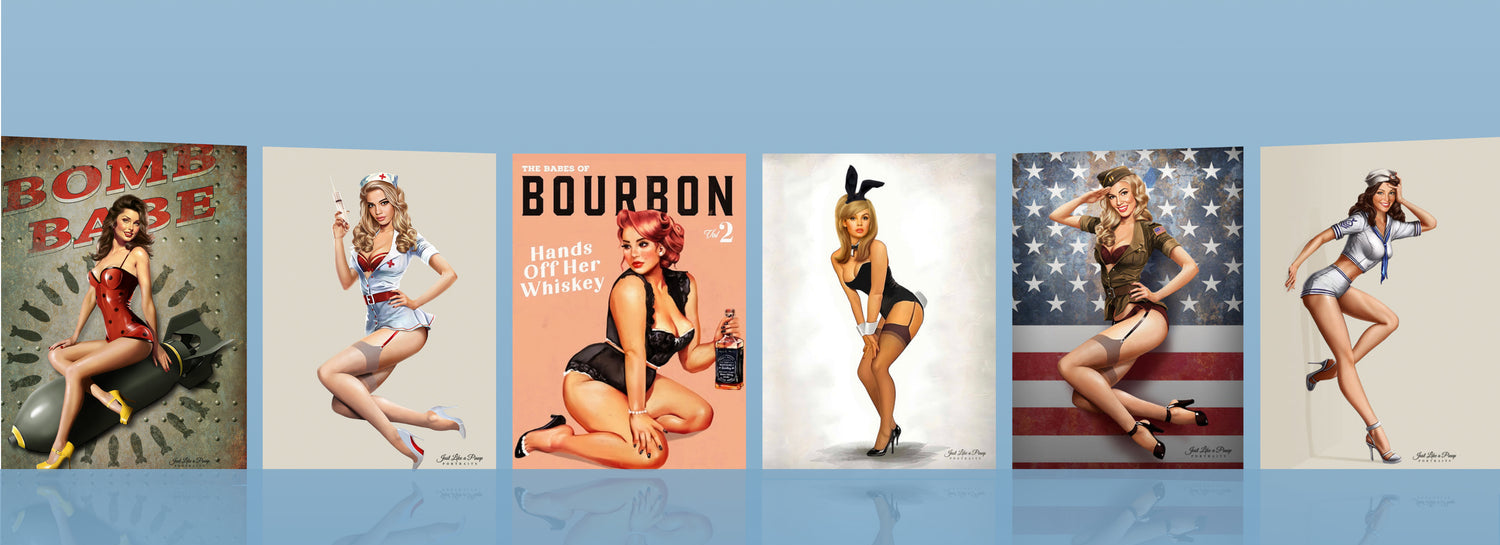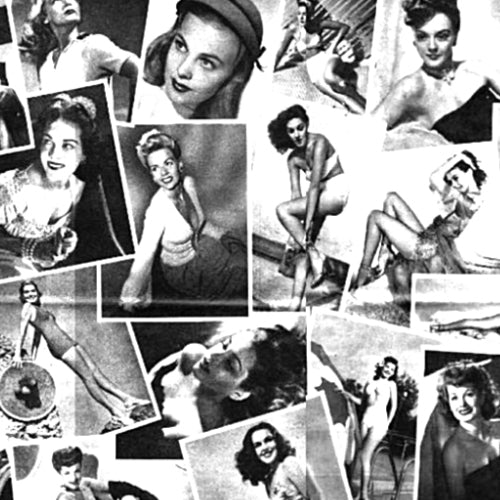Pinup girls have been a part of popular culture for over a century, and they continue to be a beloved and influential part of art and fashion today. But where did this iconic style come from, and how has it evolved over the years?
The term "pinup" refers to pictures of attractive women that were meant to be "pinned up" on walls or other surfaces for men to admire. The concept of pinups can be traced back to the 1890s, when actresses and models began posing for risqué photographs that were sold to the public. These early pinups were often marketed as "French postcards," and they were popular among soldiers and sailors who were looking for a bit of fantasy and escapism during their time away from home.
The pinup style really took off in the 1940s, during World War II. With millions of men fighting overseas, pinup girls became a way for them to feel connected to home and to the women they left behind. Magazine and calendar companies began featuring pinup models in their pages, and these images became hugely popular among servicemen and civilians alike.
One of the most iconic pinup models of the 1940s was Betty Grable, whose photo in a bathing suit became one of the best-selling posters in history. Grable's pinup featured her in a one-piece suit with her back turned to the camera, displaying her famous legs. This image was especially popular among soldiers, who dubbed Grable the "Girl with the Million Dollar Legs."
Other popular pinups of the 1940s included Rita Hayworth, Marilyn Monroe, and Jane Russell. Hayworth was known for her sultry gaze and dark, glamorous look, while Monroe was famous for her blonde curls and girl-next-door charm. Russell, meanwhile, was known for her hourglass figure and sassy attitude.
In the 1950s, the pinup style continued to be popular, with models like Brigitte Bardot and Sophia Loren becoming iconic figures. Bardot, a French actress and model, was known for her pouty lips and tousled hair, while Loren was famous for her curves and sultry gaze.
As the 1960s rolled around, the pinup look began to evolve. Models like Twiggy and Jean Shrimpton represented a more modern and androgynous version of beauty, with Twiggy's boyish figure and short haircut becoming iconic.
Today, the pinup style is still going strong, with a new generation of models and celebrities embracing the classic look. Pinup-inspired fashion, including corsets, bustiers, and high-waisted roots, has made a comeback, and pinup photoshoots have become a popular theme for bachelorette parties and other special events.
Some of the most iconic modern pinup models include Dita Von Teese, a burlesque performer known for her vintage-inspired look, and Katy Perry, who frequently incorporates pinup-style elements into her stage outfits and music videos.
Overall, the history of pinup girls is a fascinating and enduring part of popular culture. From their humble beginnings in the 1890s to their current status as a beloved and enduring style, pinups have captured the hearts and minds of people around the world. Whether you're a fan of the classic glamour of the 1940s or the more modern and edgy look of today, there's a pinup style out there for everyone.



